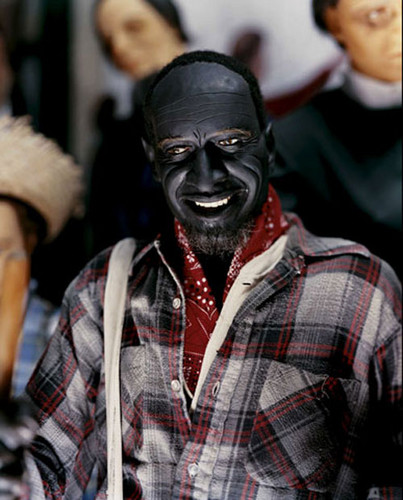Huckleberry Finn
28 Sep - 11 Dec 2010
Sept. 28 – Dec. 11, 2010
Lower and Upper Galleries
Huckleberry Finn is the third show in a trilogy of Wattis Institute exhibitions that are based on canonical American novels. In 2008, The Wizard of Oz revealed layers of political symbolism and escapism, while in 2009, Moby-Dick delved into the seemingly futile struggle between good and evil. In 2010, Huckleberry Finn will look at Mark Twain's investigation of racial tensions in America through an international lens. All three stories have major themes related to exploration and (self)discovery, and the corresponding exhibitions function as metaphorical journeys through which the audience experiences various notions of America's reality, both contemporary and historic. Established and emerging contemporary artists from around the world are invited to address the key themes of the books and the historical moments in which they were written. Many of the artists create new commissions specifically for the shows.
This investigation of America and its realities through the lens of literature by means of artworks, artifacts, and historical documents is unique to the Wattis Institute. Huckleberry Finn will encompass a wide range of works, including painting, sculpture, film, video, drawing, and photography.
Artists include:
Edgar Arceneaux
Ruth-Marion Baruch
Romare Bearden
Elizabeth Catlett
Claude Clark
Abraham Cruzvillegas
Jamal Cyrus
Emory Douglas
Geoffrey Farmer
Simon Fujiwara
Ellen Gallagher
Felix Gonzalez-Torres
Rodney Graham
David Hammons
Clementine Hunter
Edward W. Kemble
Dorothea Lange
Tim Lee
Henry Lewis
Glenn Ligon
Pare Lorentz
Jason Meadows
Kristen Morgin
Thomas Nast
Kirsten Pieroth
Horace Pippin
Betye Saar
Yinka Shonibare MBE
Allison Smith
Alec Soth
William Desmond Taylor
Hank Willis Thomas
Kara Walker
Andy Warhol
Through the lens of Adventures of Huckleberry Finn, this exhibition addresses issues of racism, the violent history of slavery, and struggles for equality. The first floor provides an introduction to the novel through ephemera such as first editions, reviews from the book's initial publication, photographs of Mark Twain, and the 1920s silent film adaptation. Historical artifacts and artworks generate a portrait of the American South and African-American life under slavery. The second floor is entirely devoted to newly commissioned and contemporary artwork that reflects upon themes from the book. The resulting narrative provides viewers with a sense of the book's history, a portrait of the time it was written, and contemporary reflections on the controversial work.
2010 marks the 125th anniversary of the first publishing of Adventures of Huckleberry Finn and the 100th anniversary of Mark Twain's passing. Since 1885 when the novel was first released, it has been consistently censored in libraries and schools for its repeated use of racial slurs and its arguably ambiguous depiction of Jim, an African-American slave. While it is counted as one of the most important works of American literature, it still tops the banned book list in America, revealing that its underlying issues of intolerance, racism, and struggles for equality are not things of the past, but still vividly alive in our society. Adventures of Huckleberry Finn is not a relic, but a living reminder of the problems of racism that still riddle our society.
The Wizard of Oz, Moby-Dick and Adventures of Huckleberry Finn all conjure up romantic nostalgia for the American dream, where freedom and adventure perpetually lie on the horizon. Taken at face value, Adventures of Huckleberry Finn chronicles the epic adventure of a boy Huck and his loyal friend Jim as they raft down the Mississippi river. They meet rapscallions, narrowly dodge family feuds, and deepen their burgeoning friendship, all while helping Jim reach freedom. Looking further into the narrative, it is a portrait of the time and an intimate look at a young boy's self-education. While many have charged Twain with racism because of his repeated use of racial slurs in the novel, this reading is an oversimplification. Though slavery had been abolished when Adventures of Huckleberry Finn was published, Jim Crow laws were an ongoing and violent form of oppression. Twain's portrait of the South in the 1830s details the hypocrisy of racism that continued through his time and ours.

